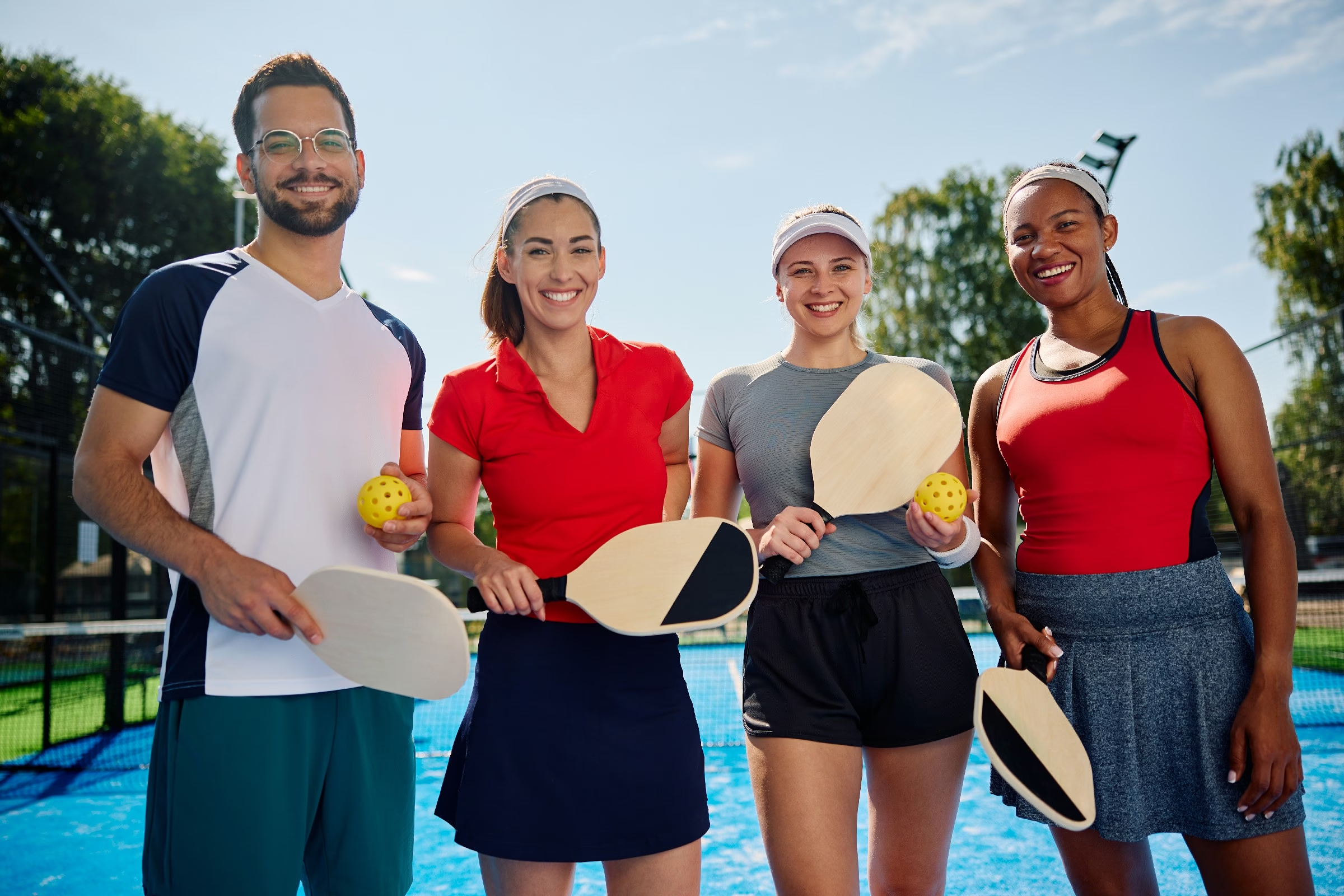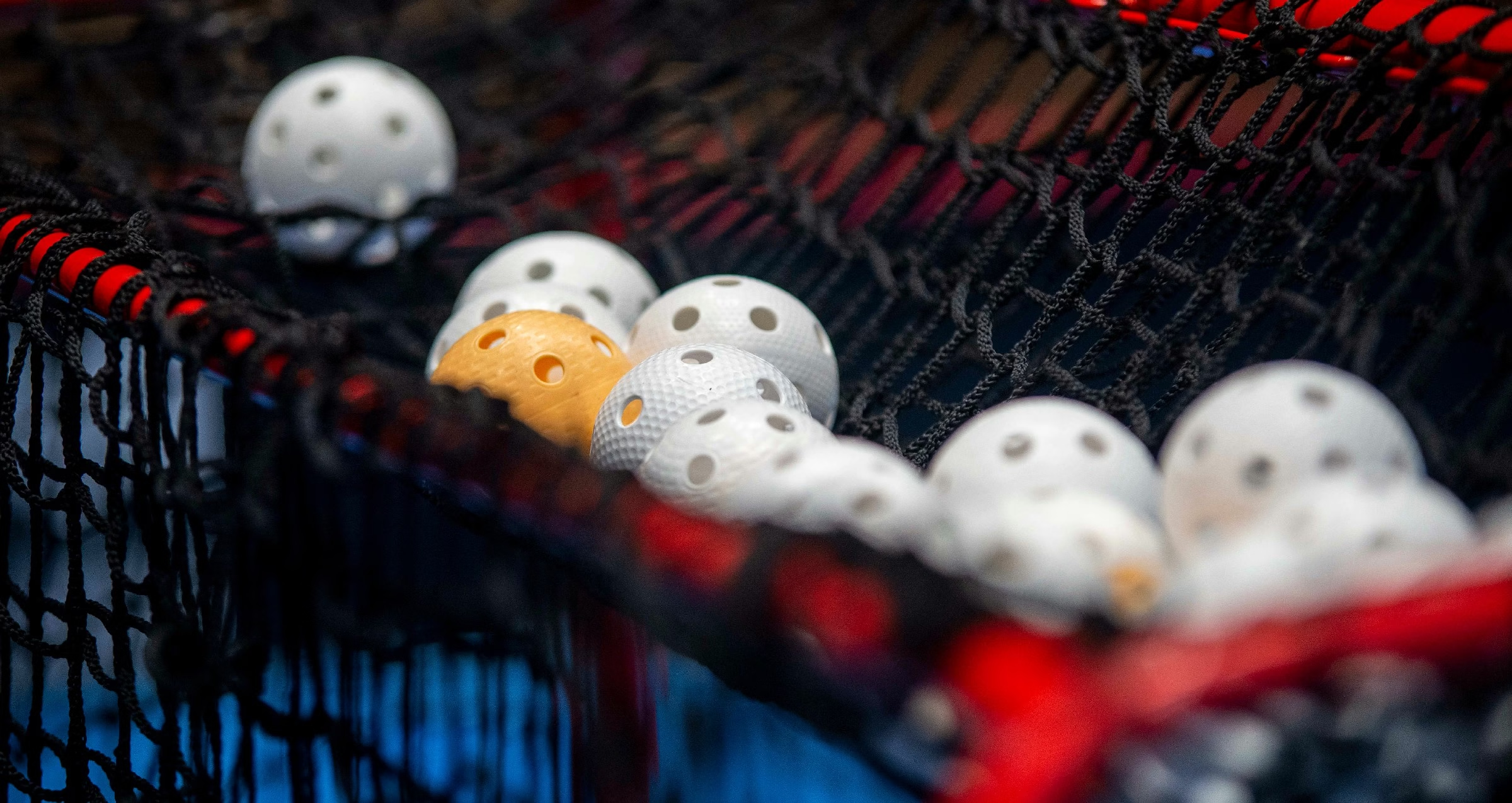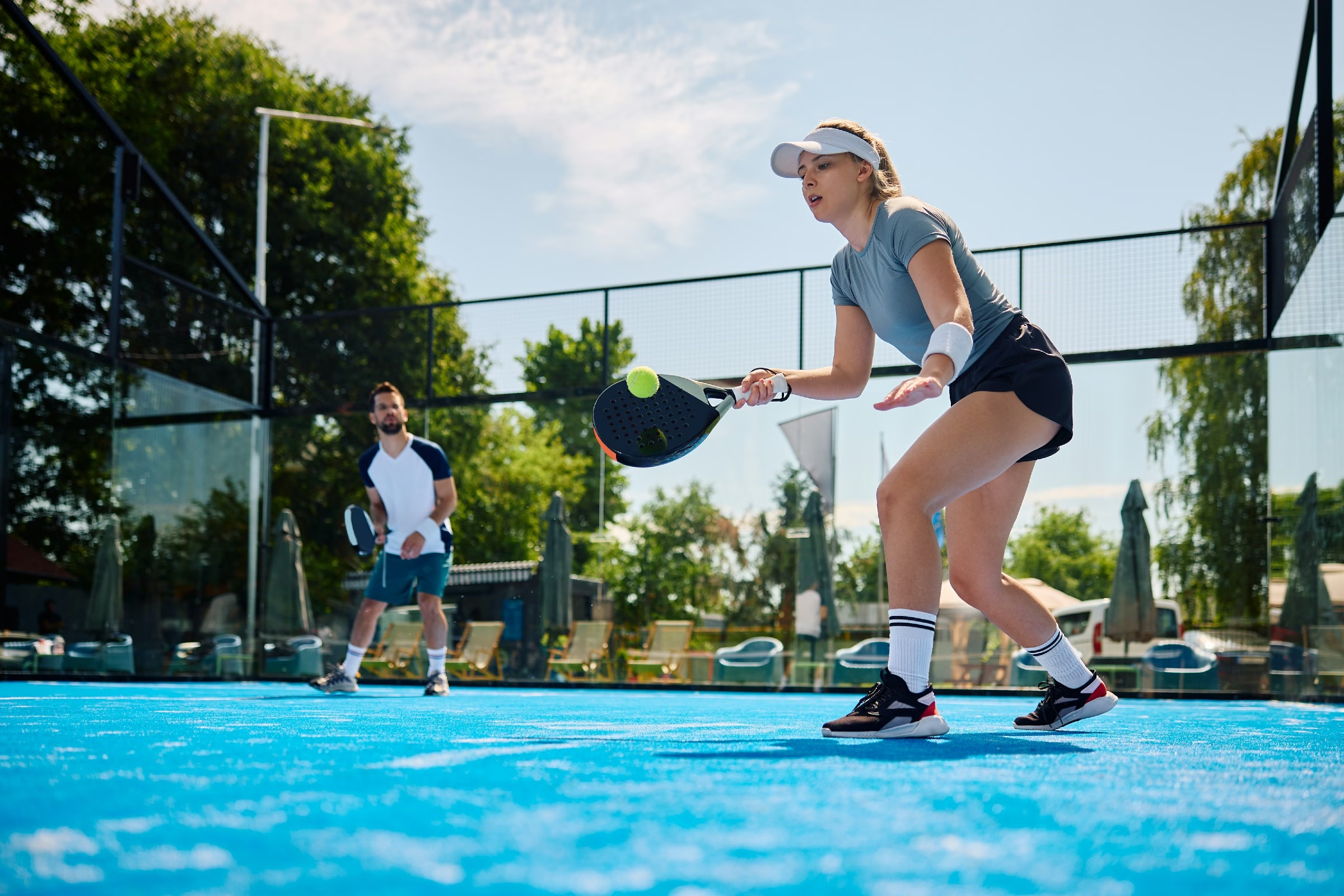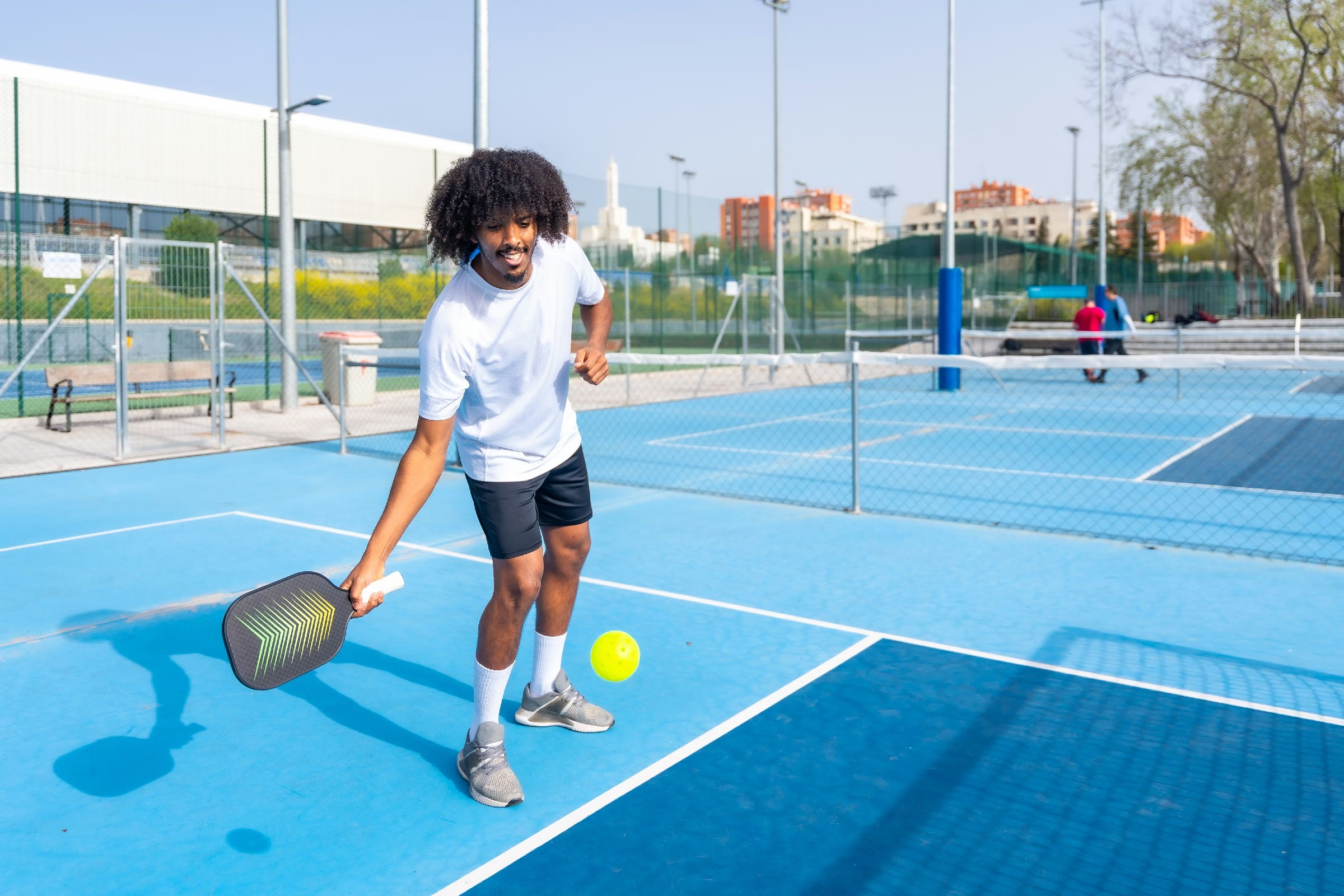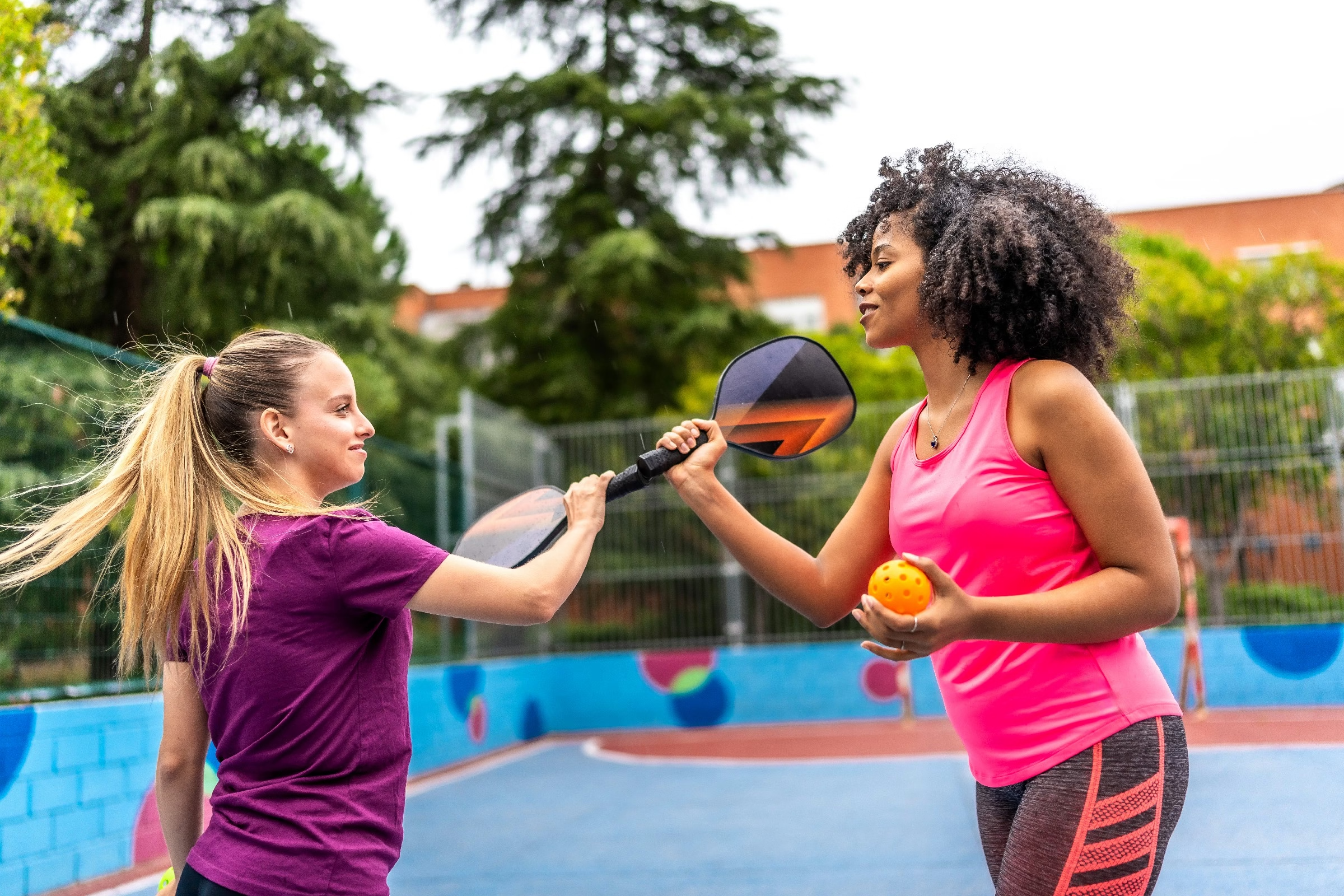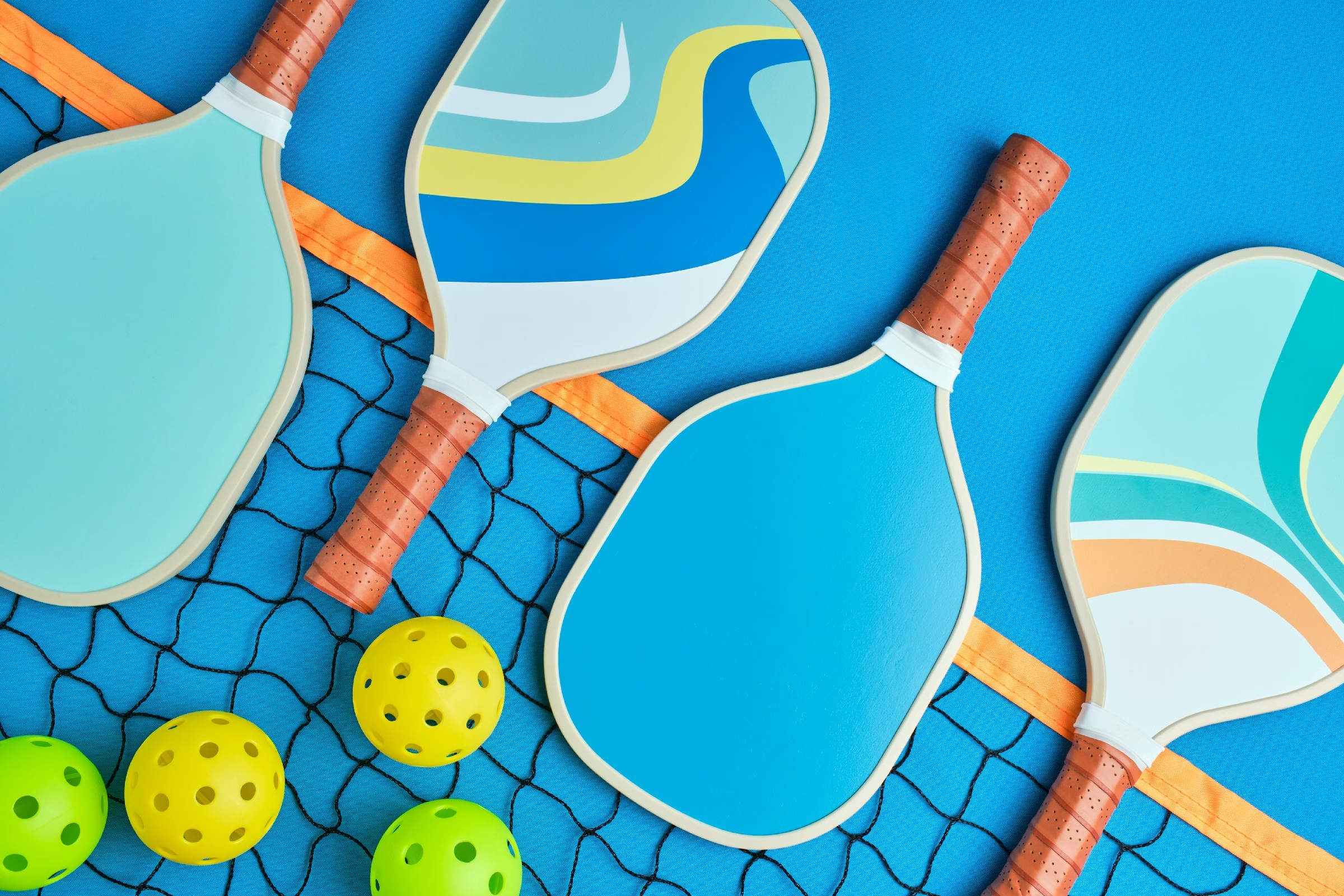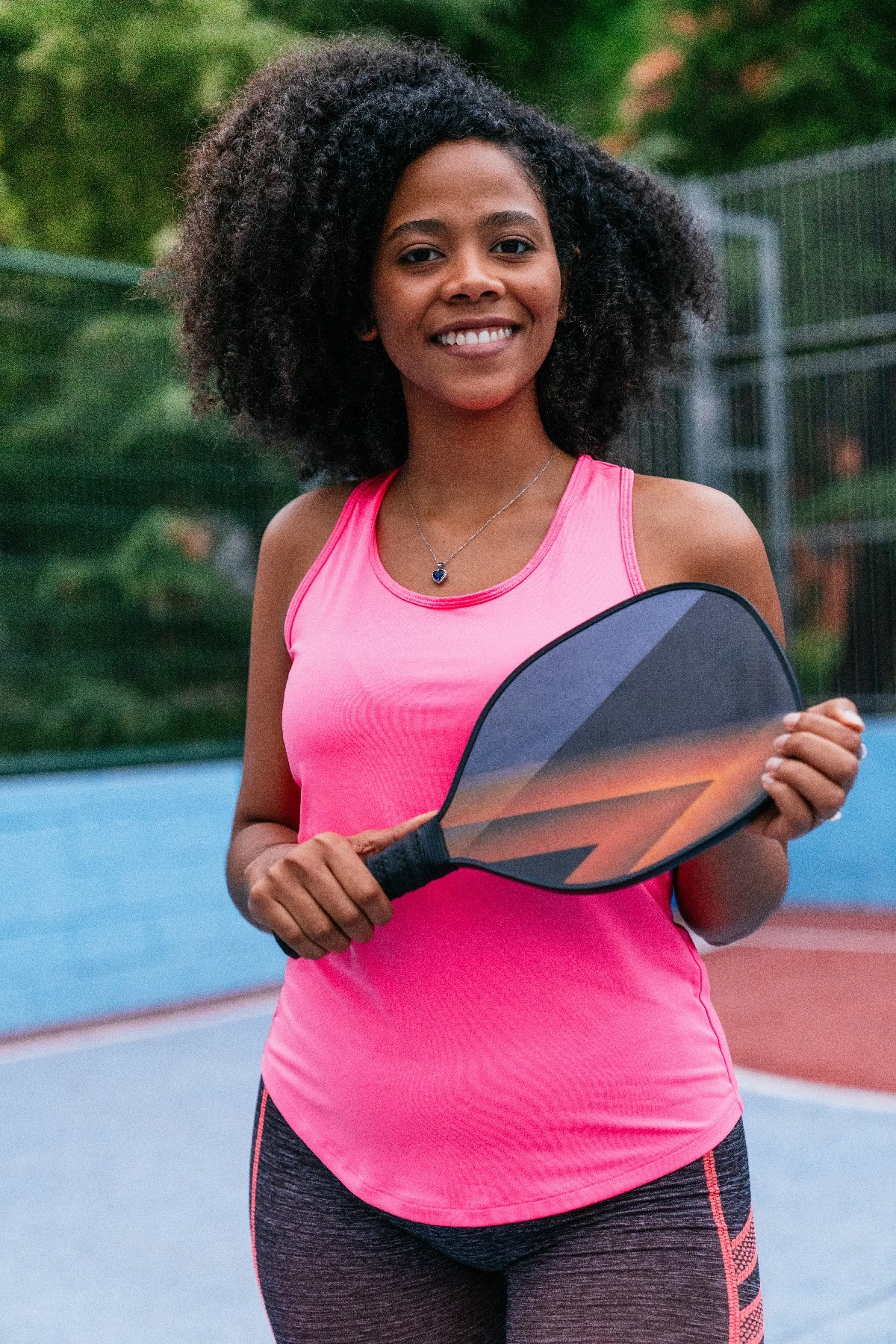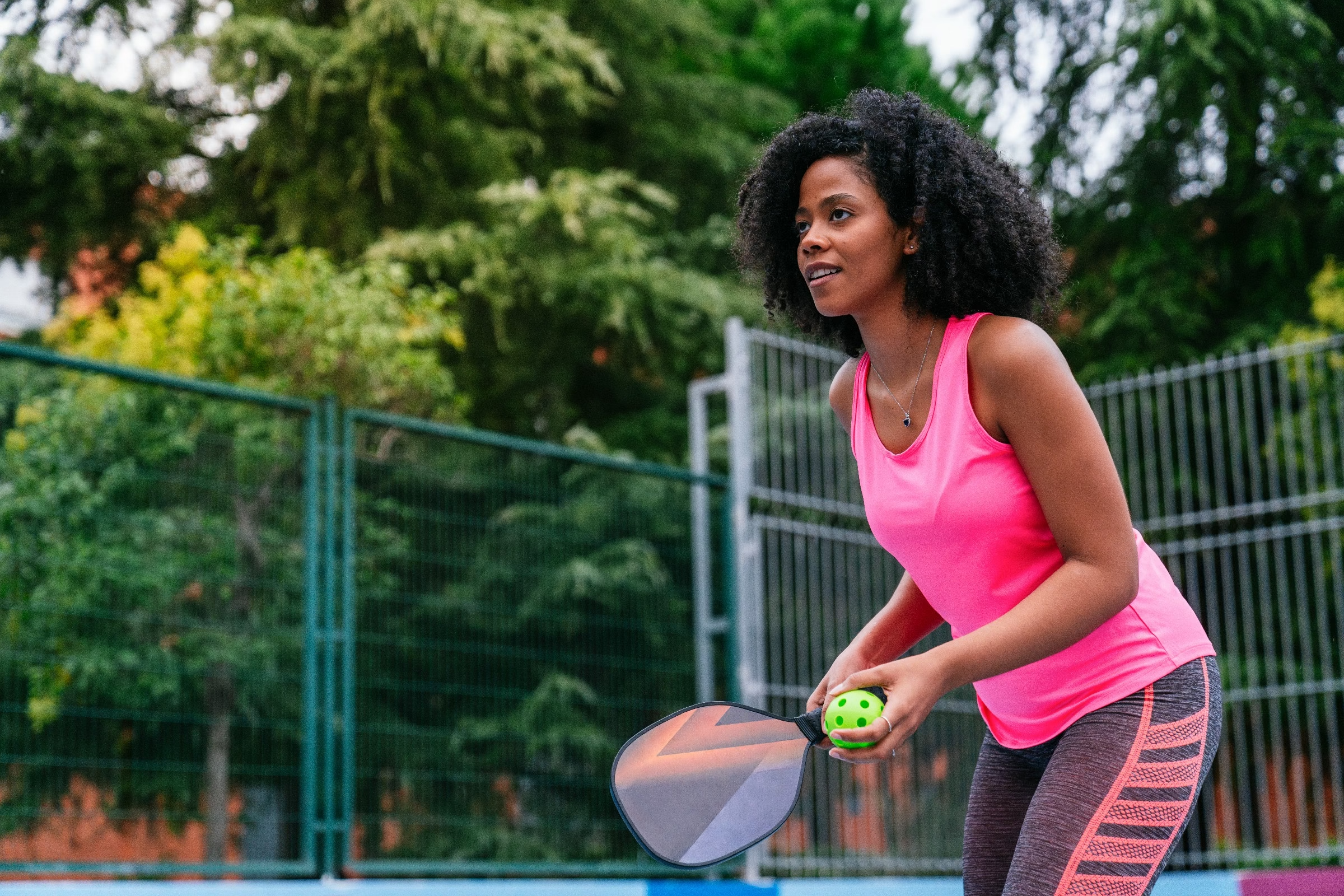Blog
what is the best pickleball paddle material
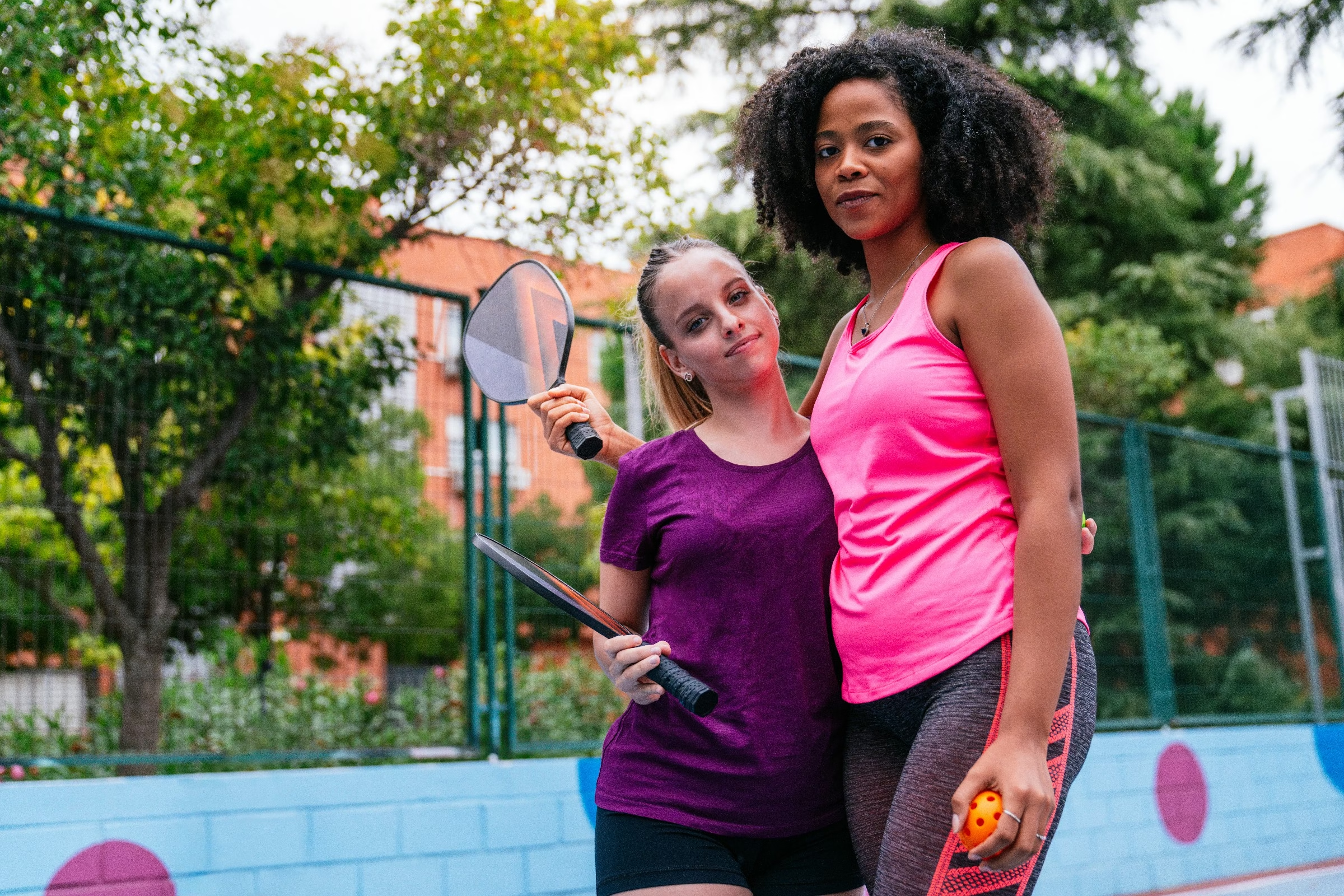
In the vibrant world of pickleball,where agility meets strategy,the choice of equipment can significantly impact a player’s performance. Among the myriad of decisions a player faces, selecting the right paddle often stands out as one of the most crucial. But with a plethora of options available—each claiming to enhance your game—the question arises: what is the best material for a pickleball paddle? In this exploration, we delve into the various materials, from the classic wood to advanced composites, analyzing their unique characteristics, benefits, and trade-offs. Whether you’re a beginner eager to learn or a seasoned player seeking refinement, understanding the nuances of paddle materials can help you make an informed choice that aligns with your style of play. Join us as we unravel the layers behind pickleball paddles, guiding you toward the perfect match for your game.
Table of Contents
- understanding Different Pickleball Paddle Materials
- Comparing Popular Core Materials for Optimal Performance
- The Role of Paddle Surface Texture in Game Play
- Weight and Balance: Choosing the Right Paddle for Your Style
- Durability and Maintenance: Ensuring Longevity in Your Paddle
- Top recommendations for Each Material Type
- Q&A
- To Conclude
Understanding Different Pickleball Paddle Materials
When it comes to selecting a pickleball paddle, the material plays a pivotal role in determining performance and feel. The most common materials used in the construction of pickleball paddles include wood, composite, and graphite. Each material comes with its unique set of characteristics, catering to different styles of play. Players often find that wooden paddles, while heavier and more basic, provide a durable and cost-effective option perfect for beginners. However,those seeking enhanced performance and maneuverability typically gravitate towards the advanced composites and graphite paddles.
Composite paddles blend a variety of materials, incorporating layers of fiberglass, carbon fiber, and resin to create a lightweight yet sturdy paddle. This combination not only allows for a larger sweet spot but also offers more control and power, making it a popular choice among intermediate to advanced players. Conversely, graphite paddles stand out for their ultra-lightweight nature paired with stiffness, which enables faster swings and sharper shots while minimizing vibrations. The trade-off, however, often comes with a higher price point but is well worth it for the performance benefits.
| Type of Paddle | Weight | Durability | Typical Users |
|---|---|---|---|
| Wood | Heavy | Very durable | Beginners |
| Composite | Medium | Durable | Intermediate to advanced |
| Graphite | light | Moderately durable | Advanced players |
Knowing the differences in paddle materials can help players make an informed decision that aligns with their playing style and skill level.Whether you prioritize weight, durability, or control, each option presents unique benefits suited to various player preferences. Testing out different paddles and understanding their materials can ultimately lead to discovering the perfect fit for your game.
Comparing Popular Core materials for Optimal Performance
When it comes to performance on the court, the choice of core material in pickleball paddles plays a fundamental role in determining the feel, control, and power of your shots. The two most popular core materials are polymer and nomex, each offering unique characteristics that cater to different playing styles.
Polymer Cores are known for their lightweight and soft nature, making them a preferred choice for players who seek control over raw power. The flexibility in polymer cores results in excellent shock absorption, reducing vibrations on impact, which is beneficial for players who experience discomfort with harder materials. Additionally, thes cores frequently enough provide decent spin capabilities, allowing players to enhance their finesse shots.
Conversely, Nomex Cores are designed for those who prioritize power and responsiveness. They are constructed from a honeycomb structure that delivers a more rigid feel at impact, translating to increased energy transfer from the paddle to the ball.This makes nomex paddles a favorite among aggressive players who seek to deliver powerful serves and hard-hitting returns. However, it’s important to note that the increased stiffness can come with a trade-off in terms of vibration absorption.
| Core Material | Key Features | Best For |
|---|---|---|
| Polymer |
|
Control players, Finesse shots |
| Nomex |
|
Aggressive players, Power serves |
The Role of Paddle Surface Texture in Game Play
The surface texture of a paddle plays a crucial role in determining how players interact with the ball during a game of pickleball. Various textures—ranging from *smooth* to *textured*—provide different advantages and affect gameplay. Players must consider the texture of their paddle as it influences ball spin, control, and power during strikes. A textured surface can enhance grip on the ball,allowing players to impart more *spin* and *control*,while a smoother surface may facilitate quicker ball release.
When it comes to choosing the right paddle texture, players can benefit from understanding the different types available.Here are some popular surface textures and their characteristics:
- Textured Paddles: Often made with raised patterns, allowing for increased *spin* and *control*.
- Smooth Paddles: Provide a cleaner, more consistent contact with the ball, favoring *speed* over *spin*.
- Hybrid Textures: Combine both smooth and textured areas, offering versatility for different styles of play.
Furthermore, the choice of surface texture can impact not only performance but also personal playing style. Players who rely heavily on *topspin* may find that textured paddles significantly elevate their game, allowing for sharper angles and greater depth. Conversely,those who favor speedy volleys and *net play* might prefer a smoother surface for a more streamlined shot. Ultimately, finding the right balance between texture and other paddle characteristics—such as weight and core material—can greatly enhance a player’s overall experience on the court.
Weight and Balance: Choosing the Right Paddle for Your Style
Choosing the right paddle material for your pickleball game is crucial, as it directly affects your performance and comfort on the court. Weight and balance significantly influence how you control the ball and respond to your opponent’s shots. Generally,paddle materials can be categorized into three main types: wood,composite,and graphite. Each of these materials offers distinct characteristics that cater to various playing styles and skill levels.
Wood paddles, though less common among experienced players, are often favored for their durability and affordability. They provide a heavier weight, which means more momentum when striking the ball. However, this added weight can sometimes feel cumbersome after prolonged play. On the other hand, composite paddles blend multiple materials for a sweet spot of power and control, making them suitable for both beginners and advanced players.These paddles often feature a polymer core, giving them a lighter feel without sacrificing performance.
Graphite paddles represent the premium tier of pickleball equipment. Weighing less than their composite counterparts, graphite paddles can enhance your agility and quick reflexes. With their excellent control and response, they are ideal for players who rely heavily on finesse and precision.Below is a simple comparison table to help you visualize the differences:
| Material | Weight | Durability | Control |
|---|---|---|---|
| Wood | Heavy | High | Moderate |
| Composite | medium | medium | High |
| Graphite | Light | Medium | Very High |
Ultimately, the choice of material depends on your personal playing style and level of experience. A balanced paddle may not always be the best option; experimenting with different weights can help you discover the perfect fit for your game. Don’t hesitate to try out various paddles before you commit,as finding the right match can elevate your overall enjoyment and performance in pickleball.
Durability and Maintenance: Ensuring Longevity in Your Paddle
When selecting a pickleball paddle, it’s crucial to consider not only the material but also how it impacts the durability and maintenance of your equipment. Paddles made from polymer, composite, or wood materials vary significantly in their resilience to wear and tear. polymer paddles typically feature high durability coefficients and are resistant to environmental factors, ensuring they stand the test of time even with regular use.Composite paddles, on the other hand, frequently enough strike a balance between weight and strength, providing excellent control while maintaining a robust structure that can withstand repeated impact.
Maintaining your paddle properly can significantly enhance its lifespan. Here are some essential maintenance tips that every pickleball player should follow:
- Regular Cleaning: Wipe down your paddle with a damp cloth after each game to remove dirt and moisture.
- Storage Conditions: Store your paddle in a cool, dry place away from direct sunlight to prevent warping and damage to the surface.
- Avoid Extreme temperatures: Keep your paddle away from extreme heat or cold, as this can weaken the materials over time.
Understanding the specific strengths and weaknesses of different materials can also guide your decision.The following table summarizes the key characteristics of commonly used paddle materials to help you choose wisely:
| Material | Durability | weight | Control Level |
|---|---|---|---|
| Polymer | High | Lightweight | Excellent |
| Composite | Moderate | Medium | Good |
| Wood | Moderate | Heavy | Fair |
Top Recommendations for Each Material Type
When it comes to polymer paddles, durability and comfort reign supreme. These paddles often feature a plastic core that provides a consistent feel on the court. For those looking to maximize their performance, consider:
- Selkirk amped Series – Known for its lively response and reduced vibration, making for excellent ball control.
- Engage Encore Pro – Offers a broader sweet spot and an ideal balance of power and touch.
- Onix Z5 Graphite – Combines lightweight construction with a polymer core, perfect for swift maneuverability.
For enthusiasts who prioritize composite paddles, versatility is key.These paddles typically combine different materials, enhancing their playability. Top recommendations include:
- Paddletek Tempest Wave Pro - Features a textured surface for increased spin potential while remaining lightweight.
- Gamma Phoenix LT – Blends control and power, making it suitable for players of varying skill levels.
- Prince Response – Offers a unique design that caters to players seeking a mix of finesse and strength.
If you’re leaning towards wooden paddles,the classic approach has its own charm and benefits. While they tend to be heavier, they provide excellent durability and a solid feel. Consider these options:
- Silent Coach Wooden Paddle – Perfect for beginners, offering an affordable price and sturdy construction.
- Champion Sports Wooden Paddle - Versatile for practice and casual play,ensuring longevity without the bells and whistles.
- WGP Wood Paddle – This paddle’s design allows for good ball control, making it a great choice for recreational players.
Q&A
Q&A: What is the Best Pickleball Paddle Material?
Q1: What are the most common materials used in pickleball paddles?
A1: Pickleball paddles are typically made from three primary materials: wood,composite,and graphite. Each offers unique characteristics that can affect performance and playability, catering to different skill levels and preferences.
Q2: What advantages does wood offer for pickleball paddles?
A2: Wood paddles are frequently enough the most affordable option and are incredibly durable. They provide a substantial feel and a solid “pop” for those who prefer a heavier paddle. While they can be somewhat slower in reaction time compared to lighter materials, they are great for beginners or casual players looking for a more traditional option.
Q3: How do composite paddles stand out?
A3: Composite paddles are a popular choice for many players because they blend performance with versatility. Made with a core of materials like honeycomb polymer, and faces that may feature fiberglass or carbon fiber, these paddles tend to offer excellent control, power, and spin. They are lightweight, allowing for faster reactions and greater maneuverability during play.
Q4: why should someone consider graphite paddles?
A4: Graphite paddles are revered for their lightweight construction and superior touch. These paddles offer increased power and a crisp response, making them a favorite among advanced players looking for enhanced precision and feel. While they tend to be pricier,the performance benefits can make them worth the investment for serious competitors.
Q5: Can you explain how weight impacts paddle performance?
A5: Absolutely! The weight of a paddle significantly influences a player’s style and ability on the court.Heavier paddles provide more power but may slow down your swing speed, while lighter paddles allow for quicker reactions and maneuverability. Balancing weight with your playing style is essential, so whether you prefer a powerhouse swing or nimble finesse, there’s a weight class for you.
Q6: Is there a “best” paddle material for all players?
A6: Not necessarily! The best material often depends on your skill level, playing style, and personal preferences. Beginners may find wood paddles to be a suitable choice,while intermediate and advanced players might favor composite or graphite for their performance benefits. Experimenting with different materials before settling on a favorite is advisable.
Q7: How does paddle texture affect gameplay?
A7: The texture of a paddle’s surface can indeed influence gameplay. Paddles with a rougher texture can enhance spin potential, allowing for more advanced shot manipulation. meanwhile, smoother surfaces provide a cleaner hit but may limit spin. Choosing a texture that complements your shot-making skills is another key consideration.
Q8: Are there any specific brands that excel in paddle material quality?
A8: Yes, several reputable brands stand out for their quality materials and craftsmanship. leading manufacturers like Selkirk, Paddletek, and Onix have engineered paddles that cater to various playing styles and preferences, consistently receiving positive feedback from players at all levels.
Q9: What’s the final takeaway?
A9: the “best” pickleball paddle material ultimately depends on individual preferences and playing style. Understanding the characteristics of wood, composite, and graphite paddles allows players to make informed decisions that can enhance their game. So, whether you’re just picking up a paddle for the first time or are a seasoned competitor, exploring different materials is key to finding your perfect match!
To Conclude
In the vibrant world of pickleball, the choice of paddle material is more than just a matter of preference; it’s a cornerstone of your playing experience. From the lively pop of a polymer paddle to the classic feel of wood, each material brings its own unique qualities to the court. By understanding the nuances of composite, fiberglass, and graphite options, you’re empowered to make an informed decision that aligns perfectly with your style of play. As you step onto the court, remember that the best paddle is one that feels just right in your hands—balancing power, control, and comfort. So, whether you’re a seasoned pro or just starting out, equipping yourself with the right paddle material will undoubtedly enhance your game and elevate your enjoyment of this dynamic sport. happy playing!

